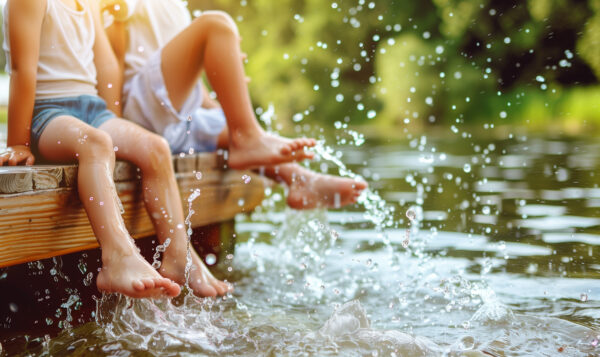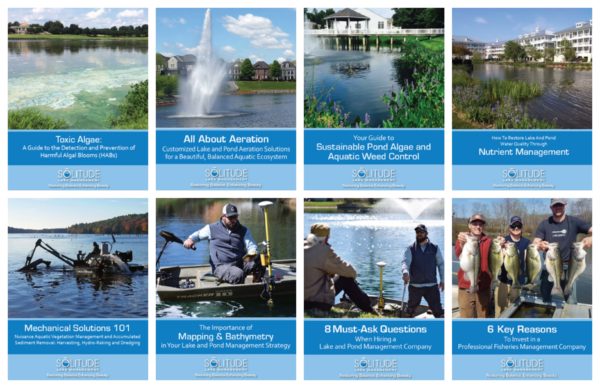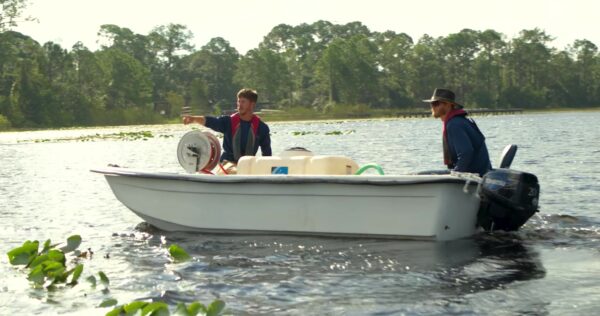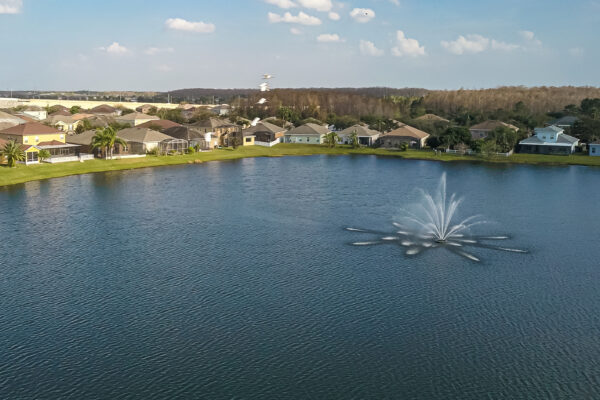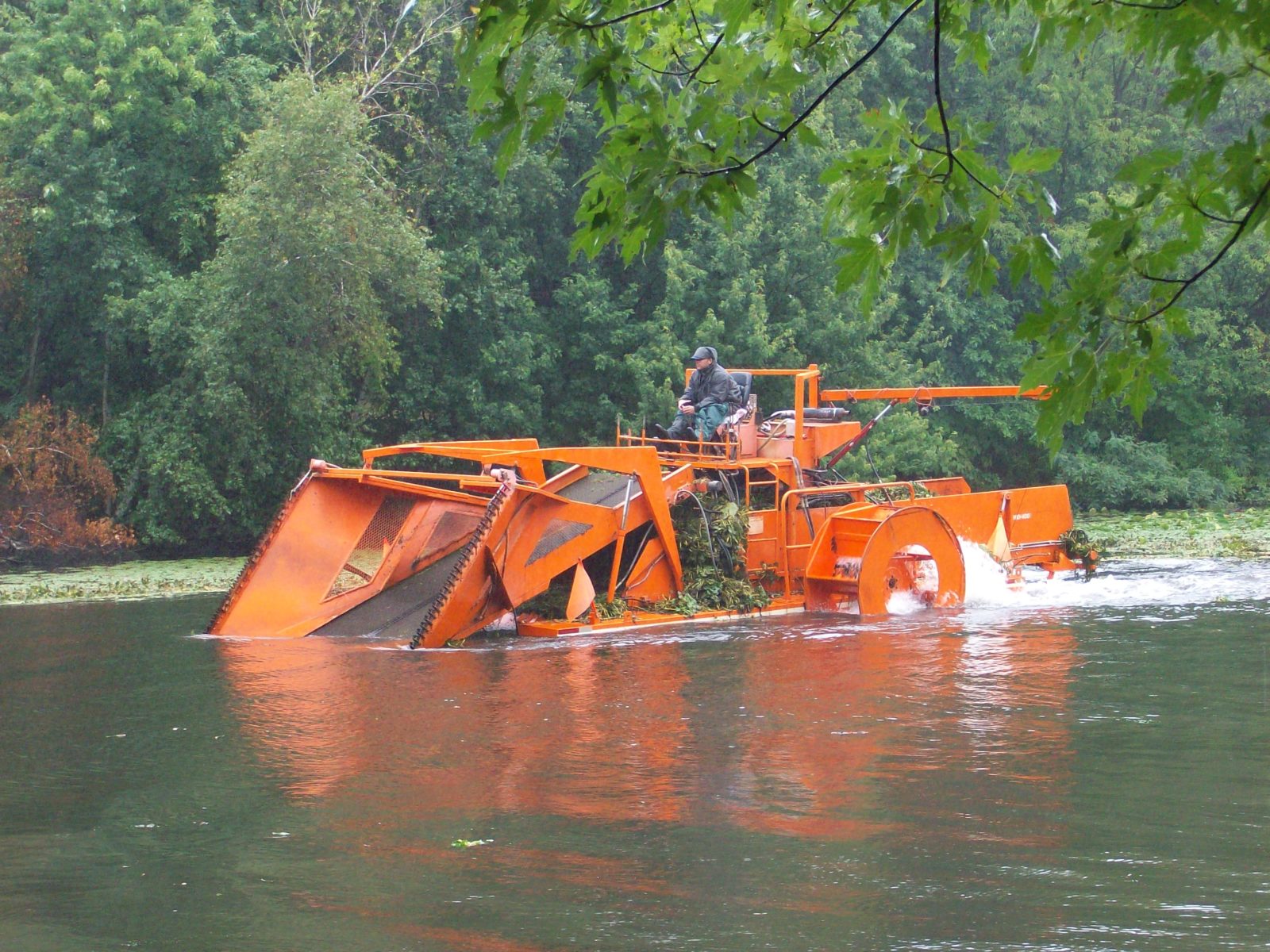
Mechanical Harvesting: A Proven Solution for Managing Aquatic Plant Infestations
Is your lake or pond plagued by annual infestations of nuisance and invasive plant species? Are aquatic plants like water chestnut, giant salvinia and water hyacinth reducing open water and interfering with fishing and recreation? Targeted herbicide applications are a highly effective and safe solution for the management of undesirable plants; however, some properties cannot accommodate the planning and water use restrictions associated with this option. Luckily, alternatives like mechanical harvesting provide similar results with minimal preparation or downtime!
Mechanical harvesters come in many shapes and sizes, but they all function in relatively the same way. Most equipment consists of a paddle wheel propelled barge equipped with an adjustable sickle-bar cutting head and mesh conveyor system. Unlike hydro-rakes, which are most effective at targeting floating-leaf and emergent plants with extensive horizontal rooted systems, harvesters are best utilized to remove annual floating leaf and submersed species. Depending on your unique goals, your lake management professional may recommend different cutting widths or onboard storage capacities.
The timing of harvesting programs can vary based on the growth cycle of targeted plant species, but harvesting is most effective during the growing season. Harvesting projects can yield up to 10 tons of vegetation per acre. Most vegetation is placed on the shoreline for off-site disposal, rather than allowing the harvested plants to decompose in the waterbody. One benefit of removing the plant biomass from the site is a reduction in pond nutrients. As the vegetation decomposes, it releases excess nutrients, which can be used to fuel further nuisance plant growth. Disposing of the harvested vegetation elsewhere prevents this negative growth cycle from continuing.
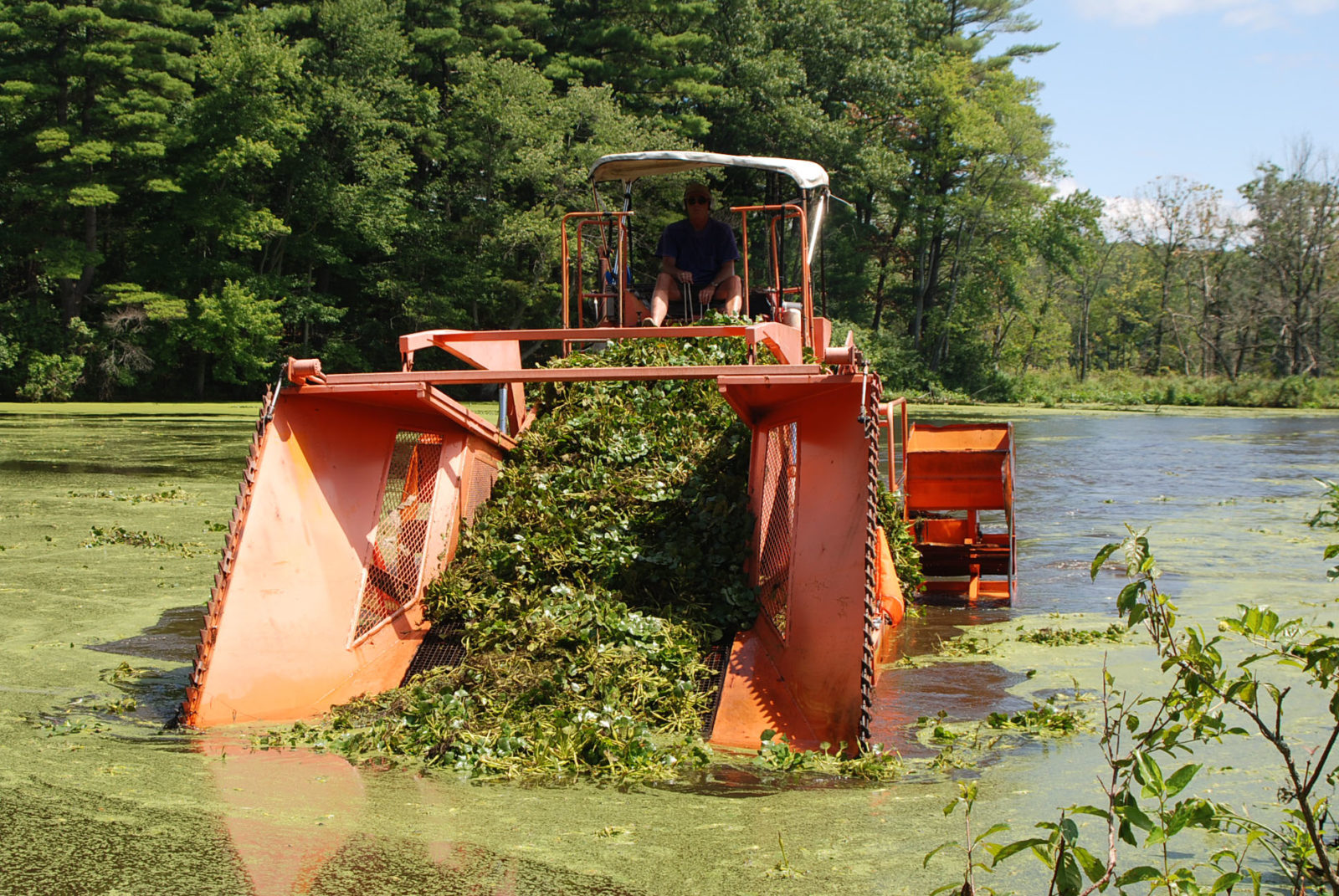
Off-site disposal is also an important strategy to help preserve the existing depth and volume of a waterbody and, thus, prolong dredging. Dredging is a costly, invasive endeavor that should only be considered as a last resort to restore depth in lakes and stormwater ponds that can no longer hold sufficient amounts of water. If several tons of plant biomass are able to decompose, the resulting muck can significantly threaten the depth of a lake or pond until dredging is the only suitable management tool left.
Harvesting is an excellent solution for property owners, associations, golf courses or municipalities that want or need to refrain from using herbicides. Likewise, the results of a harvesting program can be enhanced when paired with a variety of sustainable management solutions throughout the growth cycle. Consider establishing a beneficial vegetative buffer to help filter excess sediment and nutrients from entering your waterbody in the form of stormwater runoff. Ask your lake manager about aeration and applications of biological bacteria or phoslock and alum. These tools help prevent existing nutrients from contributing the growth of algae or aquatic weeds after your harvesting project is complete.
Finally, be sure to educate your community about proper invasive species identification, as well as ways to prevent their spread during recreation. Over time, these small strides can be used to help eradicate harmful plant species and improve the health and longevity of your aquatic ecosystem. Budgeting for the coming year? Ask your lake management professional if harvesting is a suitable solution for your waterbody.
SOLitude Lake Management is a nationwide environmental firm committed to providing sustainable solutions that improve water quality, enhance beauty, preserve natural resources and reduce our environmental footprint. SOLitude’s team of aquatic resource management professionals specializes in the development and execution of customized lake, pond, wetland and fisheries management programs that include water quality testing and restoration, nutrient remediation, algae and aquatic weed control, installation and maintenance of fountains and aeration systems, bathymetry, shoreline erosion restoration, mechanical harvesting and hydro-raking, lake vegetation studies, biological assessments, habitat evaluations, and invasive species management. Services and educational resources are available to clients nationwide, including homeowners associations, multi-family and apartment communities, golf courses, commercial developments, ranches, private landowners, reservoirs, recreational and public lakes, municipalities, drinking water authorities, parks, and state and federal agencies. SOLitude Lake Management is a proud member of the Rentokil family of companies in North America.

